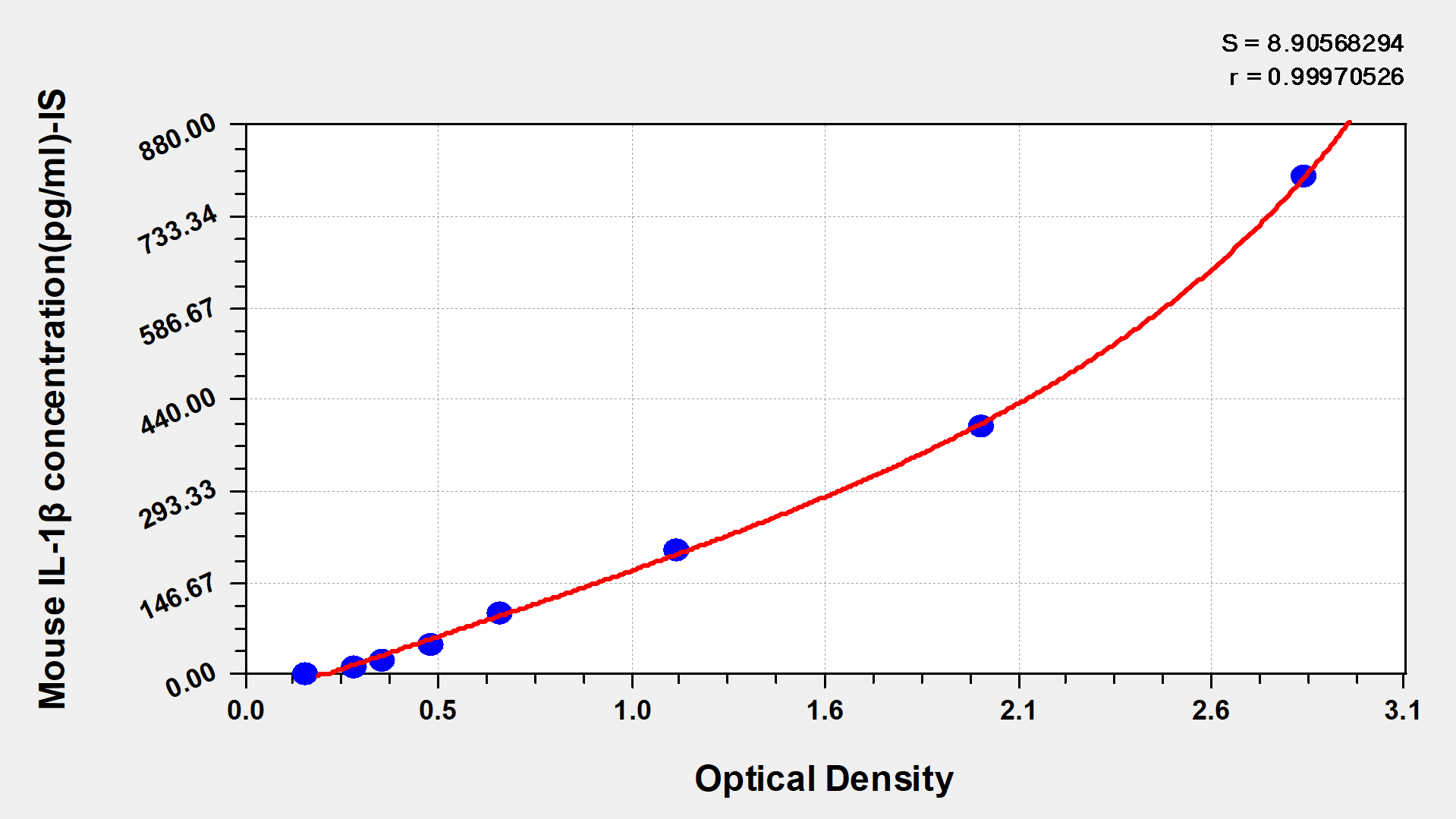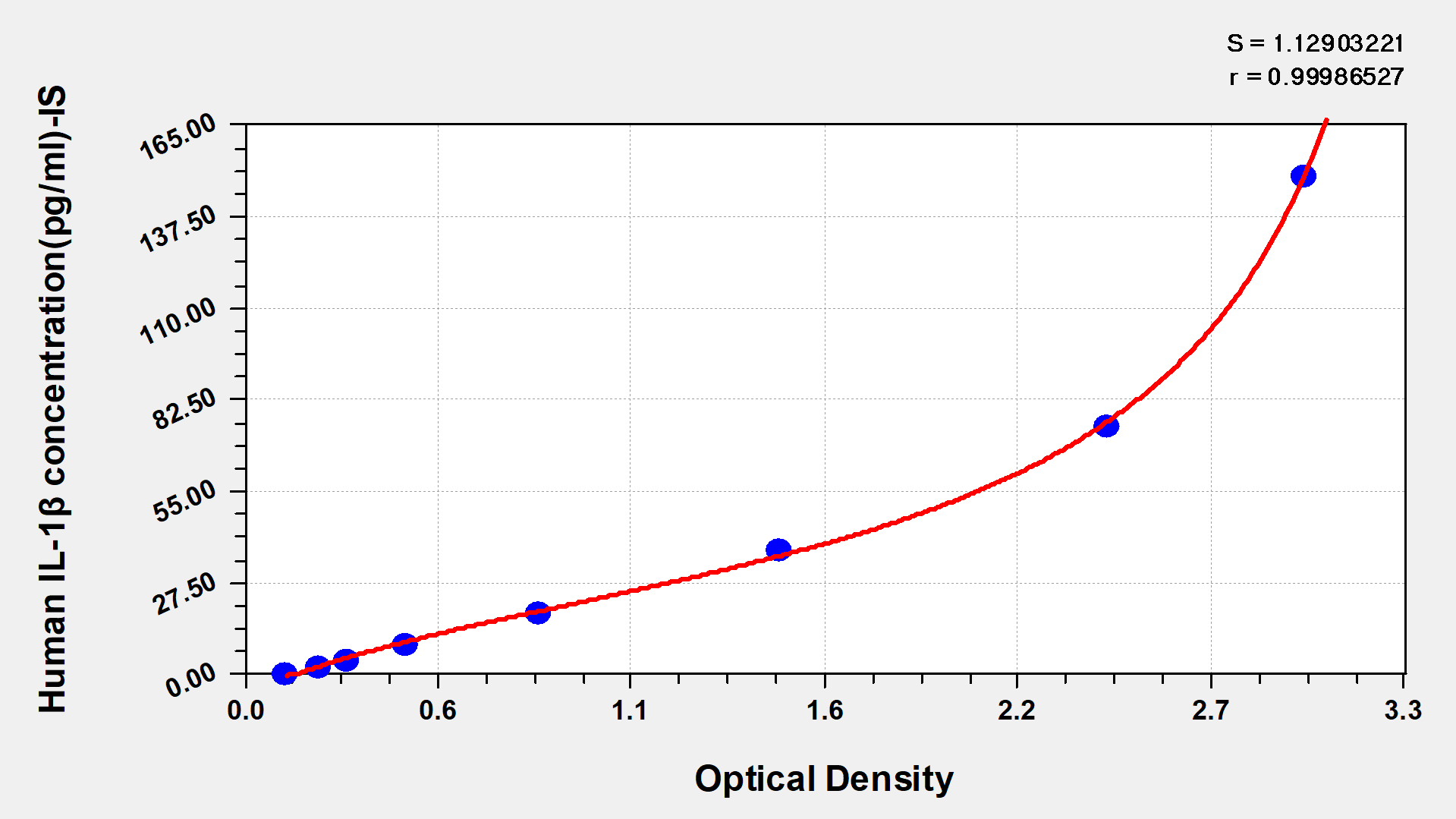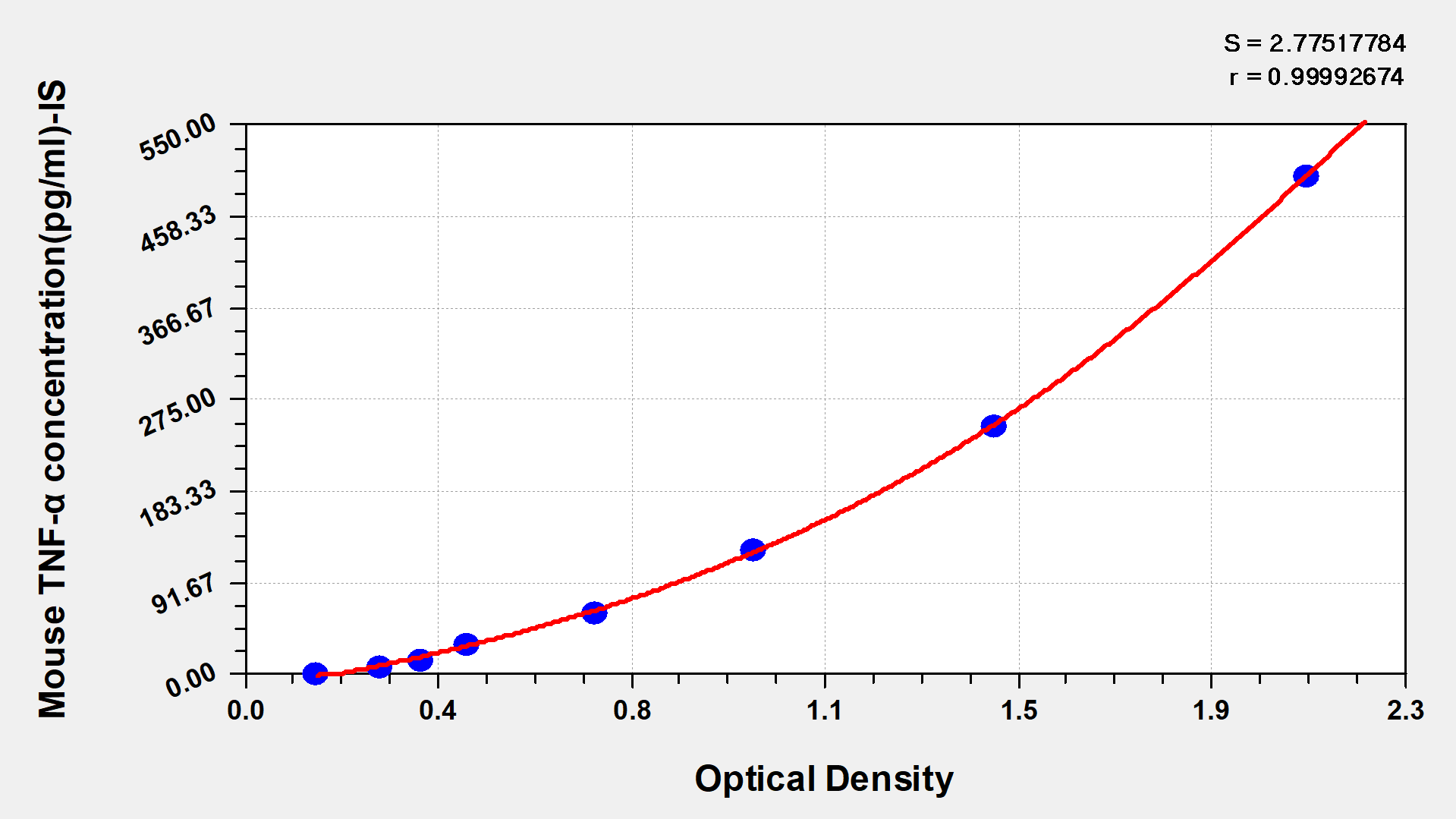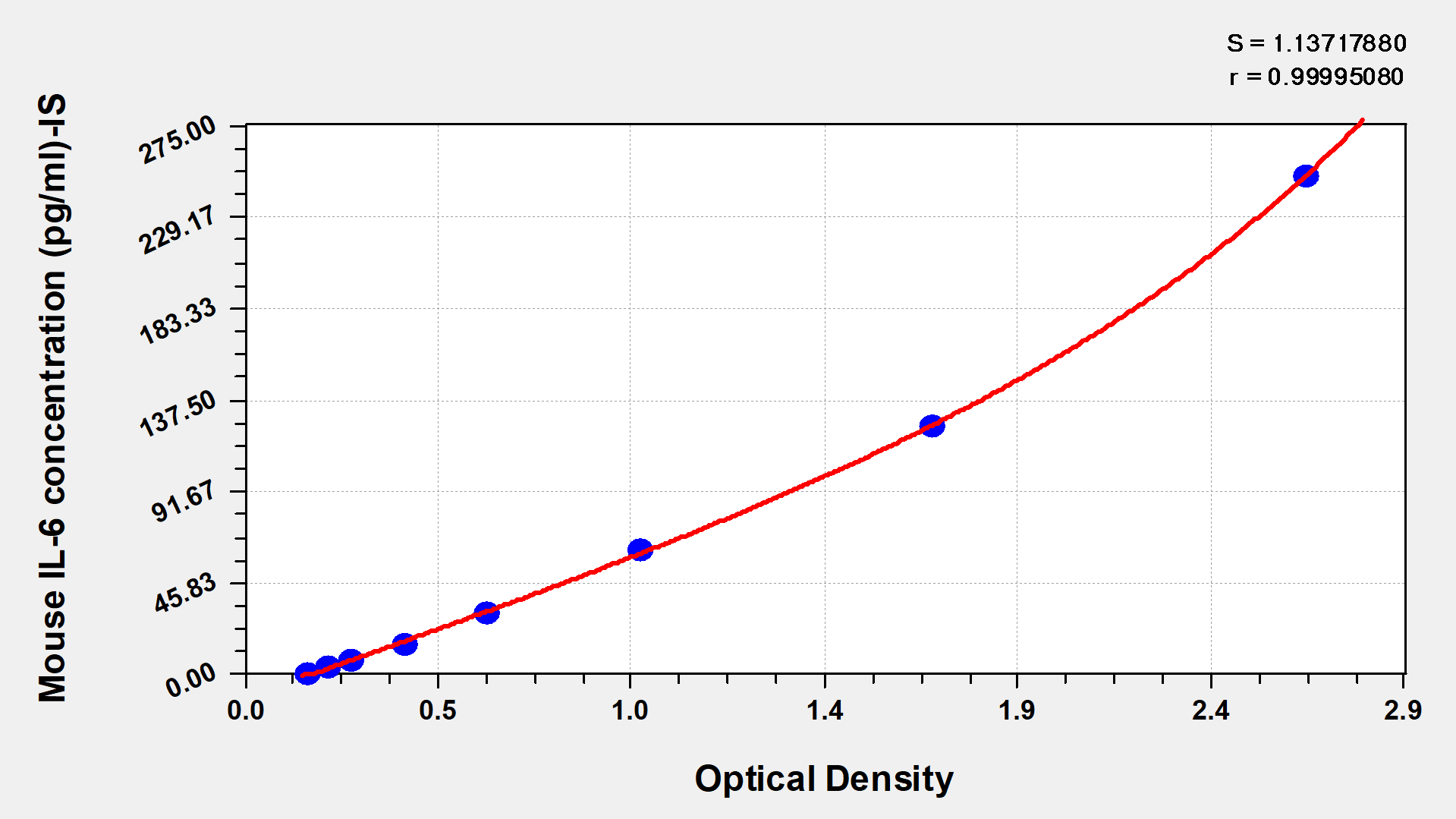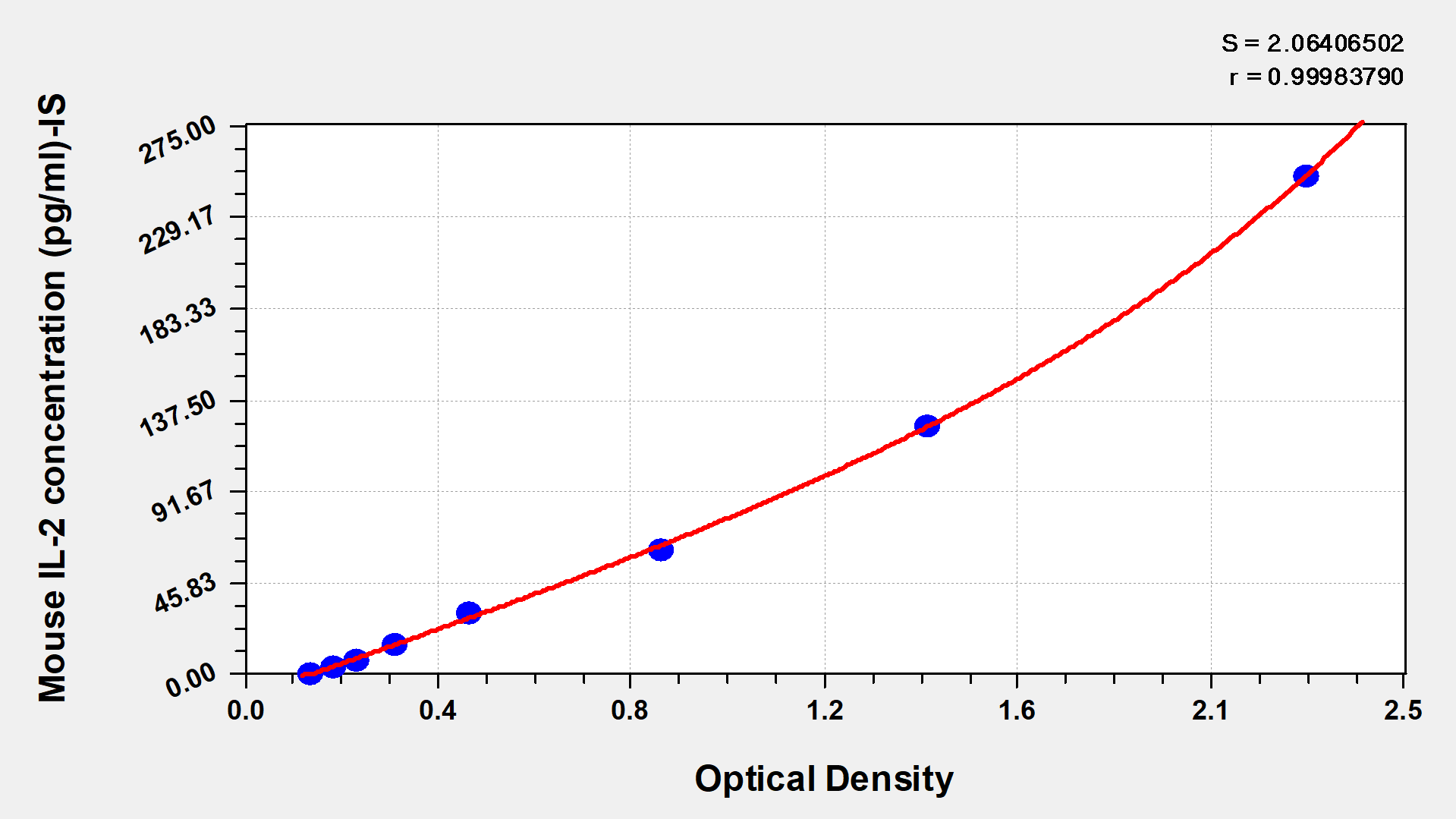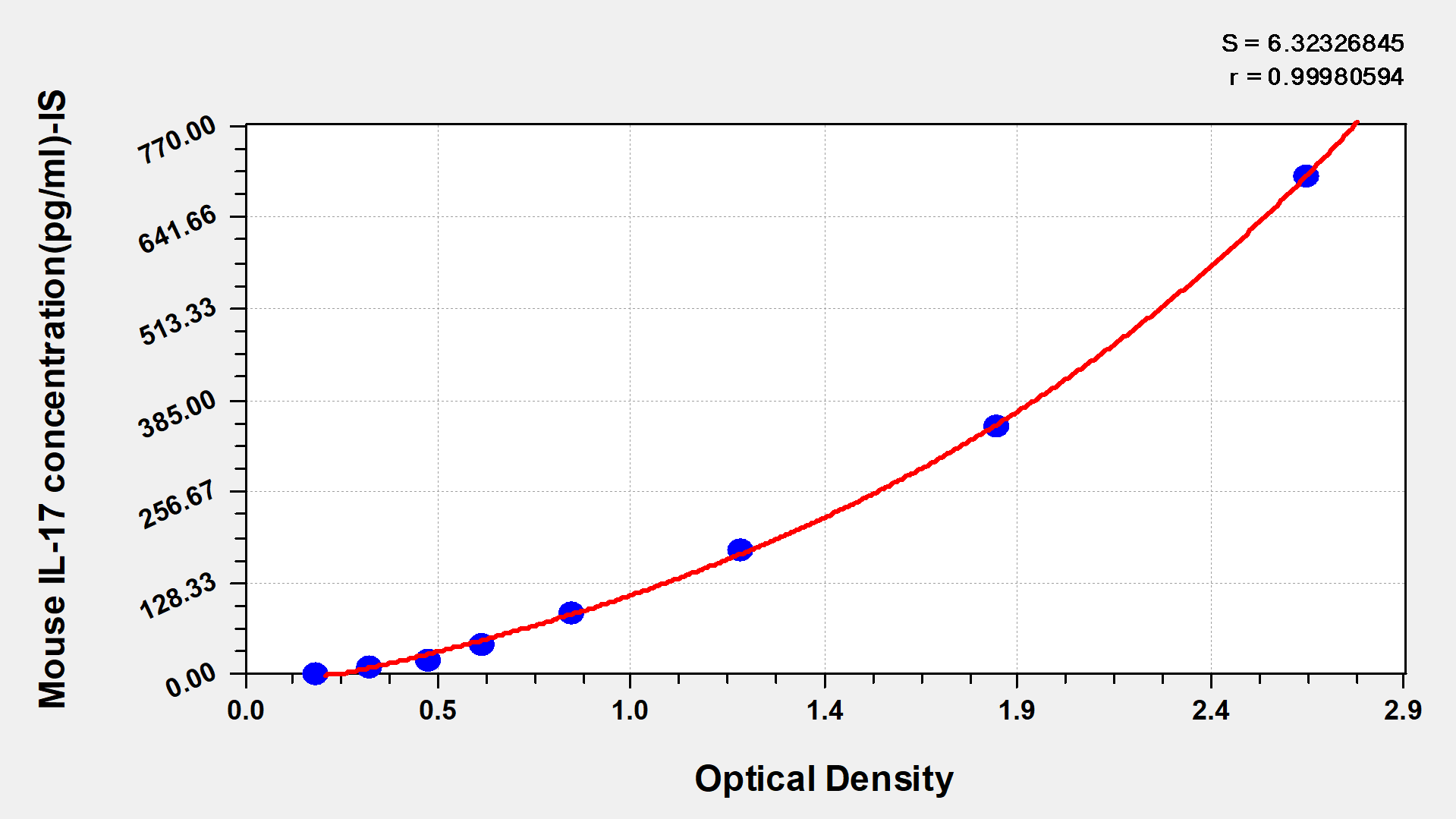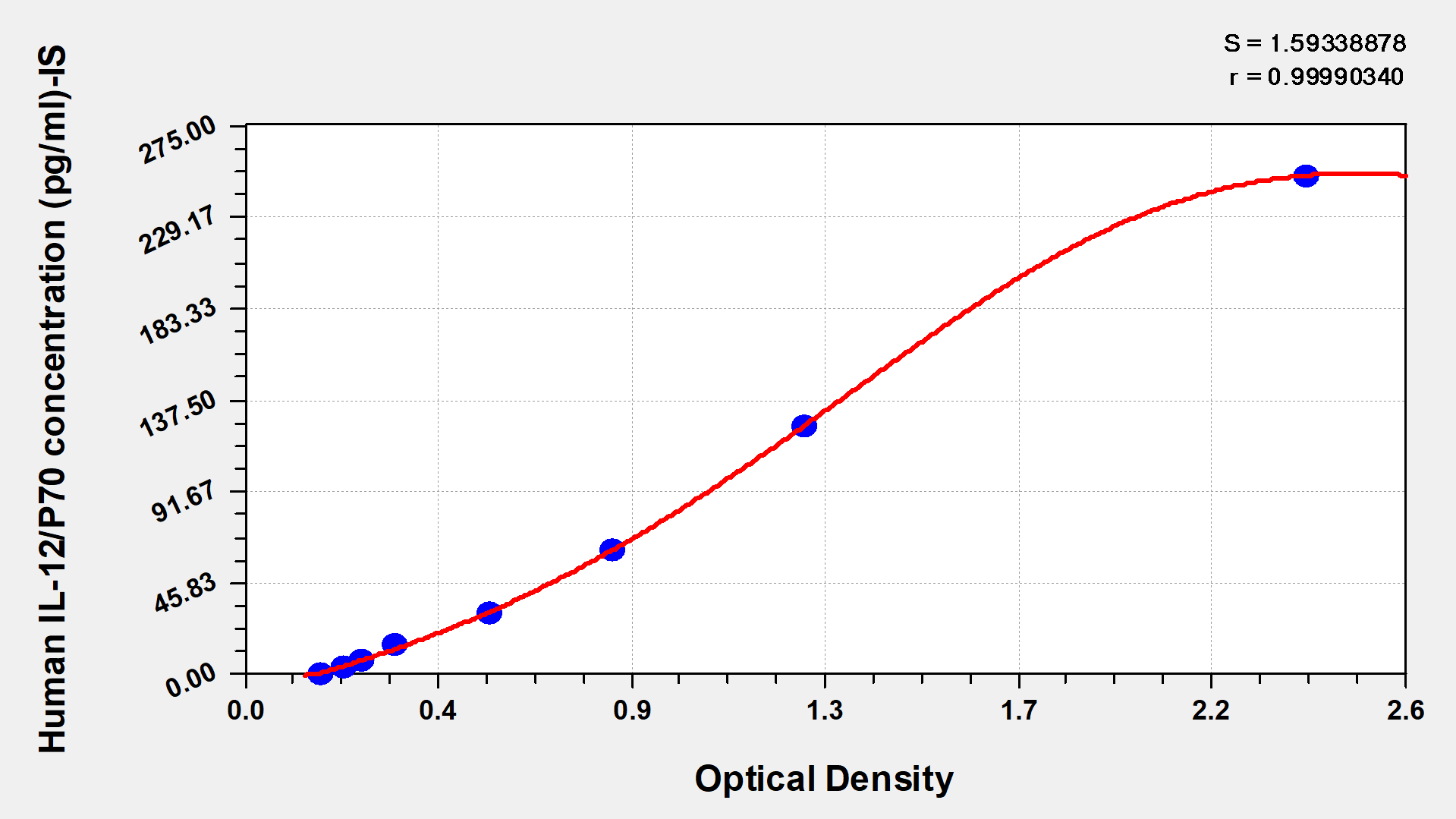Mouse Platelet Factor 4,PF-4 ELISA Kit

產(chǎn)品詳情
-
產(chǎn)品描述:
小鼠血小板因子4(PF-4/CXCL4)酶聯(lián)免疫試劑盒(CSB-E07884m)為雙抗夾心法ELISA試劑盒���,定量檢測血清��、血漿��、組織勻漿樣本中的PF4含量����。PF4即血小板因子4,是血小板α顆粒分泌的一種小分子趨化蛋白���。其背景在于在止血��、炎癥和免疫反應(yīng)等過程有重要作用����。研究機(jī)制方面�����,PF4能與多種細(xì)胞表面受體相互作用��,調(diào)節(jié)細(xì)胞功能�����,也參與調(diào)節(jié)血管生成�����、細(xì)胞增殖與遷移等生物學(xué)過程���。試劑盒檢測范圍為3.125 ng/mL-200 ng/mL��,靈敏度為1.603 ng/mL��。該產(chǎn)品適用于心血管疾病模型��、炎癥機(jī)制研究�����、血小板功能分析等基礎(chǔ)科研場景�,例如在動脈粥樣硬化�����、血栓性疾病或免疫相關(guān)動物模型中評估血小板活性及病理進(jìn)程。本品僅用于科研���,不用于臨床診斷�,產(chǎn)品具體參數(shù)及操作步驟詳見產(chǎn)品說明書�。
-
別名:
Pf4 ELISA Kit; Cxcl4 ELISA Kit; Scyb4 ELISA Kit; Platelet factor 4 ELISA Kit; PF-4 ELISA Kit; C-X-C motif chemokine 4 ELISA Kit
-
縮寫:
-
Uniprot No.:
-
種屬:
Mus musculus (Mouse)
-
樣本類型:
serum, plasma, tissue homogenates
-
檢測范圍:
3.125 ng/mL-200 ng/mL
-
靈敏度:
1.603 ng/mL
-
反應(yīng)時間:
1-5h
-
樣本體積:
50-100ul
-
檢測波長:
450 nm
-
研究領(lǐng)域:
Cardiovascular
-
測定原理:
quantitative
-
測定方法:
Sandwich
-
精密度:
| Intra-assay Precision (Precision within an assay): CV%<8% |
|
|
|
|
| Three samples of known concentration were tested twenty times on one plate to assess. |
|
|
| Inter-assay Precision (Precision between assays): CV%<10% |
|
|
|
|
| Three samples of known concentration were tested in twenty assays to assess. |
|
|
|
| |
|
|
|
|
|
|
|
-
線性度:
| To assess the linearity of the assay, samples were spiked with high concentrations of mouse PF-4 in various matrices and diluted with the Sample Diluent to produce samples with values within the dynamic range of the assay. |
|
| |
Sample |
Serum(n=4) |
|
|
| 1:200 |
Average % |
86 |
|
|
| Range % |
81-90 |
|
|
| 1:400 |
Average % |
98 |
|
|
| Range % |
92-104 |
|
|
| 1:800 |
Average % |
97 |
|
|
| Range % |
94-102 |
|
|
| 1:1600 |
Average % |
94 |
|
|
| Range % |
89-98 |
|
|
-
回收率:
| The recovery of mouse PF-4 spiked to levels throughout the range of the assay in various matrices was evaluated. Samples were diluted prior to assay as directed in the Sample Preparation section. |
|
| |
| Sample Type |
Average % Recovery |
Range |
|
|
| Serum (n=5) |
89 |
86-94 |
|
|
| EDTA plasma (n=4) |
98 |
92-104 |
|
|
| |
|
|
|
|
|
|
|
| |
|
|
|
|
|
|
|
-
標(biāo)準(zhǔn)曲線:
| These standard curves are provided for demonstration only. A standard curve should be generated for each set of samples assayed. |
|
| |
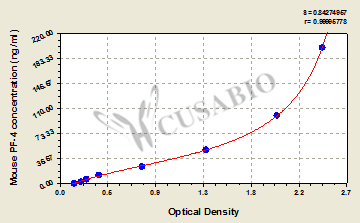
| ng/ml |
OD1 |
OD2 |
Average |
Corrected |
|
|
| 200 |
2.501 |
2.402 |
2.452 |
2.308 |
|
|
| 100 |
2.093 |
1.975 |
2.034 |
1.890 |
|
|
| 50 |
1.354 |
1.383 |
1.369 |
1.225 |
|
|
| 25 |
0.778 |
0.769 |
0.774 |
0.630 |
|
|
| 12.5 |
0.386 |
0.371 |
0.379 |
0.235 |
|
|
| 6.25 |
0.268 |
0.257 |
0.263 |
0.119 |
|
|
| 3.125 |
0.209 |
0.202 |
0.206 |
0.062 |
|
|
| 0 |
0.144 |
0.143 |
0.144 |
|
|
|
|
-
本試劑盒所含材料:
- A micro ELISA plate ---The 96-well plate has been pre-coated with an anti-mouse PF4 antibody. This dismountable microplate can be divided into 12 x 8 strip plates.
- Two vials lyophilized standard ---Dilute a bottle of the standard at dilution series, read the OD values, and then draw a standard curve.
- One vial Biotin-labeled PF4 antibody (100 x concentrate) (120 μl/bottle) ---Act as the detection antibody.
- One vial HRP-avidin (100 x concentrate) (120 μl/bottle) ---Bind to the detection antibody and react with the TMB substrate to make the solution chromogenic.
- One vial Biotin-antibody Diluent (15 ml/bottle) ---Dilute the Biotin-antibody.
- One vial HRP-avidin Diluent (15 ml/bottle) ---Dilute the HRP-avidin solution.
- One vial Sample Diluent (50 ml/bottle)---Dilute the sample to an appropriate concentration.
- One vial Wash Buffer (25 x concentrate) (20 ml/bottle) ---Wash away unbound or free substances.
- One vial TMB Substrate (10 ml/bottle) ---Act as the chromogenic agent. TMB interacts with HRP, eliciting the solution turns blue.
- One vial Stop Solution (10 ml/bottle) ---Stop the color reaction. The solution color immediately turns from blue to yellow.
- Four Adhesive Strips (For 96 wells) --- Cover the microplate when incubation.
- An instruction manual
顯示更多
收起更多
-
本試劑盒不含材料:
- A microplate reader capable of measuring absorbance at 450 nm, with the correction wavelength set at 540 nm or 570 nm.
- An incubator can provide stable incubation conditions up to 37°C±5°C.
- Centrifuge
- Vortex
- Squirt bottle, manifold dispenser, or automated microplate washer
- Absorbent paper for blotting the microtiter plate
- 50-300ul multi-channel micropipette
- Pipette tips
- Single-channel micropipette with different ranges
- 100ml and 500ml graduated cylinders
- Deionized or distilled water
- Timer
- Test tubes for dilution
顯示更多
收起更多
-
數(shù)據(jù)處理:
-
貨期:
3-5 working days
靶點詳情
-
最新研究進(jìn)展:
PF4,全稱為血小板因子4(platelet factor 4)���,是一種由血小板釋放的化學(xué)因子���,具有多種生物學(xué)功能,包括抑制血管內(nèi)皮細(xì)胞增殖和抗菌作用����。最近的研究還表明,PF4在腫瘤發(fā)生和發(fā)展中也扮演著重要角色���。
-
功能:
Released during platelet aggregation. Neutralizes the anticoagulant effect of heparin because it binds more strongly to heparin than to the chondroitin-4-sulfate chains of the carrier molecule. Chemotactic for neutrophils and monocytes. Inhibits endothelial cell proliferation.
-
基因功能參考文獻(xiàn):
- these data demonstrate that PF4 has an important role in increasing B cell differentiation in the bone marrow environment PMID: 28914425
- these results identify CXCL4 as a vital immunoregulatory chemokine essential for protecting mice against influenza A virus infection, especially as it affects the development of lung injury and neutrophil mobilization to the inflamed lung PMID: 28120850
- These results indicate that CXCL4 is a novel Ni-binding protein that augments Ni allergy at the elicitation and sensitization phases. This is the first study to demonstrate that the Ni-binding protein augments Ni allergy in vivo. PMID: 28319310
- PF4 was produced by Ly6G+CD11b+ immature myeloid cells in the early stage premetastatic lungs, and decreased during metastatic progression. PMID: 27223426
- These data demonstrate that the CXCR2 network and CXCL4 play a role in the maintenance of normal HSC/HPC cell fates, including survival and self-renewal. PMID: 27222476
- Platelet-derived CXCL7 and CXCL4 contribute to the pathogenesis of acute lung injury. PMID: 27755915
- CXCL4 plays an important role in pancreatic inflammation PMID: 27183218
- Platelet secretion of CXCL4 is Rac1-dependent and regulates neutrophil infiltration and tissue damage in septic lung damage PMID: 26478565
- PF4 has a complex intramedullary life cycle with important implications in megakaryopoiesis and hematopoietic stem cell replication not seen with other tested alpha granule proteins. PMID: 26256688
- Heparin enhances antigen uptake and activation of the initial steps in the cellular immune response to PF4-containing complexes. PMID: 25960020
- Data indicate that platelet factor 4 (PF4) is involved directly in liver innate immune response against ischaemia-reperfusion injury (IRI) by regulating Th17 cell differentiation. PMID: 25440775
- CXCL4 regulates hematopoietic stem cell cell cycle activity. PMID: 25326802
- Platelet factor 4 has a role in regulating Th17 differentiation and cardiac allograft rejection PMID: 24463452
- Histones regulate activated protein C formation in a manner similar to PF4 and suggest heparinoids may be benificial in sepsis. PMID: 24177324
- PF4 drives a vascular smooth muscle inflammatory phenotype including a decline in differentiation markers, increased cytokine production, and cell proliferation. PMID: 23568488
- PF4 expression on intestinal epithelial cells is increased after IR at both the mRNA and protein levels. In conclusion, these findings demonstrate that may PF4 represent an important mediator of local and remote tissue damage. PMID: 22792197
- These results suggest that Cxcl4 and Cxcl7 play a role in the development of neurobehavioral alterations that are triggered by in utero TCDD exposure and later surface in adults. PMID: 21509788
- PF4 may have a role in bacterial defense, and heparin-induced thrombocytopenia is probably a misdirected antibacterial host defense mechanism. PMID: 20959601
- In vivo, half-life and diffusibility of CXCL4L1 compared with Cxcl4 is strongly increased. PMID: 20688960
- These data indicate that PF4 induction of monocyte KLF4 expression may be an important step in the pathogenesis of experimental cerebral malaria. PMID: 20454664
- Micronutrients effectively promote tumor dormancy in early prostate cancer by inducing platelet factor-4 expression and concentrating it at the tumor endothelium through enhanced platelet binding. PMID: 20525356
- CXC chemokine ligand 4 (Cxcl4) is a platelet-derived mediator of experimental liver fibrosis. PMID: 20162727
- important role for PF4 in thrombosis and neutralization of PF4 is an important component of heparin's anticoagulant effect. PMID: 14764524
- Platelet factor 4 and interleukin-8 CXC chemokine heterodimer formation modulates function at the quaternary structural level PMID: 15531763
- the PF4 storage pathway in alpha-granules is not a default pathway, but rather a regular granule storage pathway probably requiring specific sorting mechanisms PMID: 15613031
- analysis of granule targeting sequence within platelet factor 4 PMID: 15964840
- clinical heterogeneity in the HIT immune response may be due in part to requirements for specific biophysical parameters of the PF4/heparin complexes that occur in settings of intense platelet activation and PF4 release PMID: 17848616
- platelet-associated PF-4, but not its plasma counterpart, may represent a potential biomarker of early tumor presence PMID: 17914028
- platelet specific chemokine PF4 promotes atherosclerotic lesion development in vivo PMID: 18000617
- Brain microglia are a cellular source of CXCL4 gene expression. PMID: 18248618
- platelet-derived PF4 contributes to immune activation and T cell trafficking as part of the pathogenesis of experimental cerebral malaria . PMID: 18692777
- Platelet factor 4 regulates megakaryopoiesis through low-density lipoprotein receptor-related protein 1 (LRP1) on megakaryocytes. PMID: 19605848
顯示更多
收起更多
-
亞細(xì)胞定位:
Secreted.
-
蛋白家族:
Intercrine alpha (chemokine CxC) family
-
數(shù)據(jù)庫鏈接:
Most popular with customers





